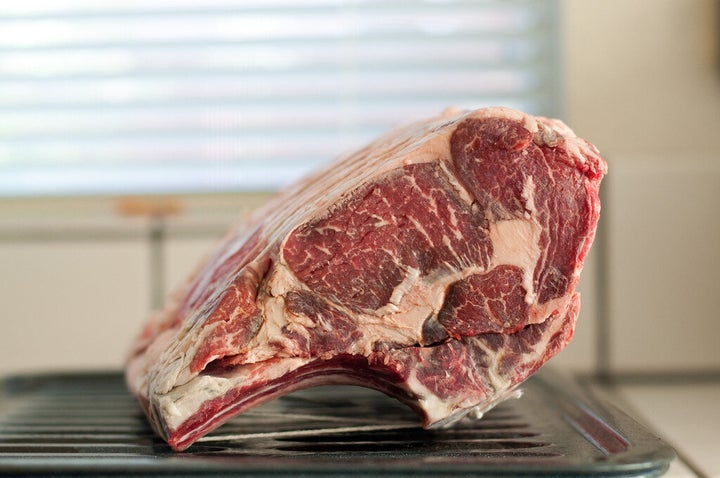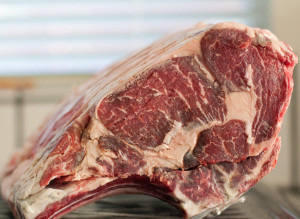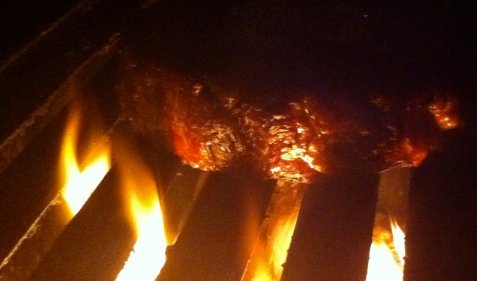
Northern Michigan in November is bleak. Put away the tourist materials -- in the state Grillworks has called home for 30 years a bitter north wind sweeps fall color away in a mid-month weekend like so much spent confetti. The state's flatness offers no shelter from the oncoming cold. No snug New England valleys hugging warm hamlets. Winter is coming. Get ready or get out.
The tip of the mitt, called the northern lower peninsula, surrounded as it is by two of the largest Great Lakes and kitty corner to legendary Lake Superior, is also a lake-effect perfect storm every year. Moisture from the lakes sweeps into the atmosphere, hits the cold air over the land and, frozen into big fluffy snowflakes, blankets the shore. Commencing at the twilight of November and continuing through February residents can expect snow every couple of days and ground cover a couple of feet to man-deep. It's disorienting for locals to even glimpse the earth before March.
Permanent residents batten down the hatches in November. They stack the firewood roof --high. They fatten the pantry. They fatten themselves. This is not the season for panini or sushi. Michael Moore's film festival crowd has fled south and only the real northern Michiganders remain.
The region was run by logging operations and steamship lines at the turn of the last century. The state was in the throes of an all-out timber rush and brought in heavy human stock to do the lifting. Voyageur French, Pole, German, Brit, Nordic and Native American 'jacks called the lumber camps of Michigan home through the 1890s, and the walls of local bars and VFW clubs bear faded photos of surly men glaring over handlebar mustaches to prove it. It was a boom that went bust long before the big three took root further south. But that grit didn't depart with the old growth forests -- descendents of those northern frontiersmen and 49ers remain, and their habits haven't changed. Big cold means big eat.
Forget the steaks of summer -- they can't protect you from the approaching snows. In Michigan's November you need steaks born of roasts.
* * *
 The advantage of a roast is that it cooks artfully, gradually, and because of its size and fat composition resists overcooking or dryness. It is forgiving. A big roast will serve a logging camp without anyone getting a chewy slice. Conveniently enough one of the baddest individual steaks to be had, the bone-in rib, happens to be buried in a gently-priced roast at most meat counters. Choose your rib roast as you would individual steaks. Look for fine marbling at the ends and for long bones. Calculate a pound for each eater as the flavorful bones will make up much of the weight. Don't let them trim away any more of that precious fat.
The advantage of a roast is that it cooks artfully, gradually, and because of its size and fat composition resists overcooking or dryness. It is forgiving. A big roast will serve a logging camp without anyone getting a chewy slice. Conveniently enough one of the baddest individual steaks to be had, the bone-in rib, happens to be buried in a gently-priced roast at most meat counters. Choose your rib roast as you would individual steaks. Look for fine marbling at the ends and for long bones. Calculate a pound for each eater as the flavorful bones will make up much of the weight. Don't let them trim away any more of that precious fat.
When you get your roast home transform it into cuts that are each 3" thick. They should stand easily on their edge. You'll call them steaks as your guests marvel at their heft, but you're going to treat them as roasts on the grill and the dinner table. They will be carved rather than served whole.
Thickness and an abrasive grill surface necessitates extra seasoning, so after wetting with olive oil make sure to apply plenty of sea salt to the outside of each steak. Minced garlic and cracked pepper are also fine, optional additions. Allow the meat time to reach room temperature and absorb some of your coating -- at least 45 minutes outside of the refrigerator.
Bring your grill to medium temperature (remember: roasts) and oil the surface just before placing the cuts, bone side down, standing up on their edge. If you are using a lidded grill, keep it open to limit heat exposure to the down edge. The bone itself will cook the meat around it, intensifying and distributing the surrounding flavor. This organic buffer zone between the heat and the center of the roast also protects from overcooking. Grill in this position, keep the heat moderate, and baste. If you don't have a juice-catching grill, brush everything with melted butter or olive oil as you cook.
When the flanks have just begun to firm, drop the steaks down on each side for a 3-5 minute sear over high heat. If possible, flare in direct flame. Keep basting.

Since you 'll essentially end up with a set of mini(!) roasts you can offer your guests a wide array of doneness options; far more than could be achieved with thinner steaks -- and every slice, thanks to the magic of surface area mathematics, available with that coveted outer crust in such short supply on a larger single roast.
Remove your big northerns from the grill, allow time for them to rest and absorb both both juices and admiration, and carve.
That November wind won't stand a chance.
Top photo from Flickr: VirtualErn